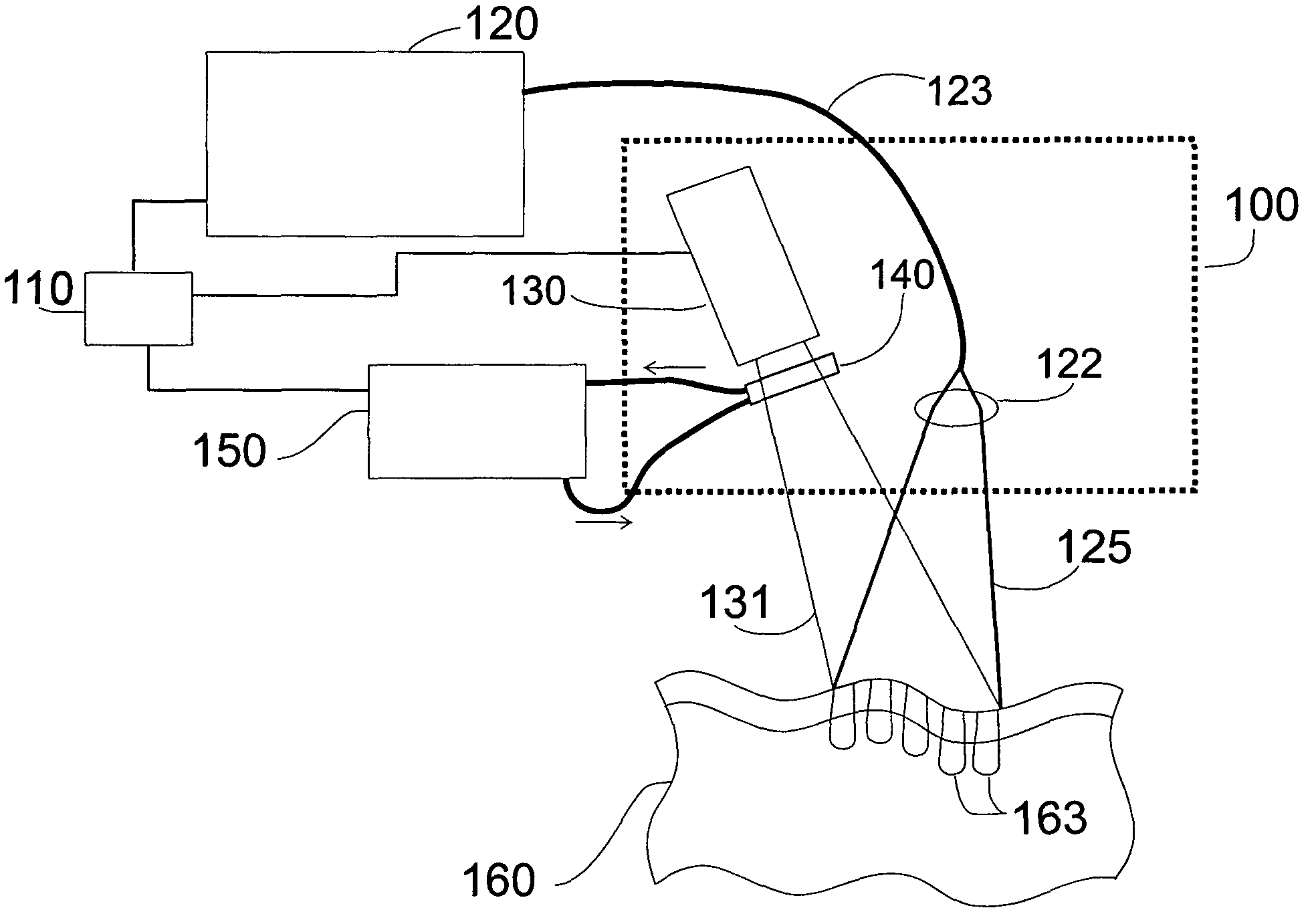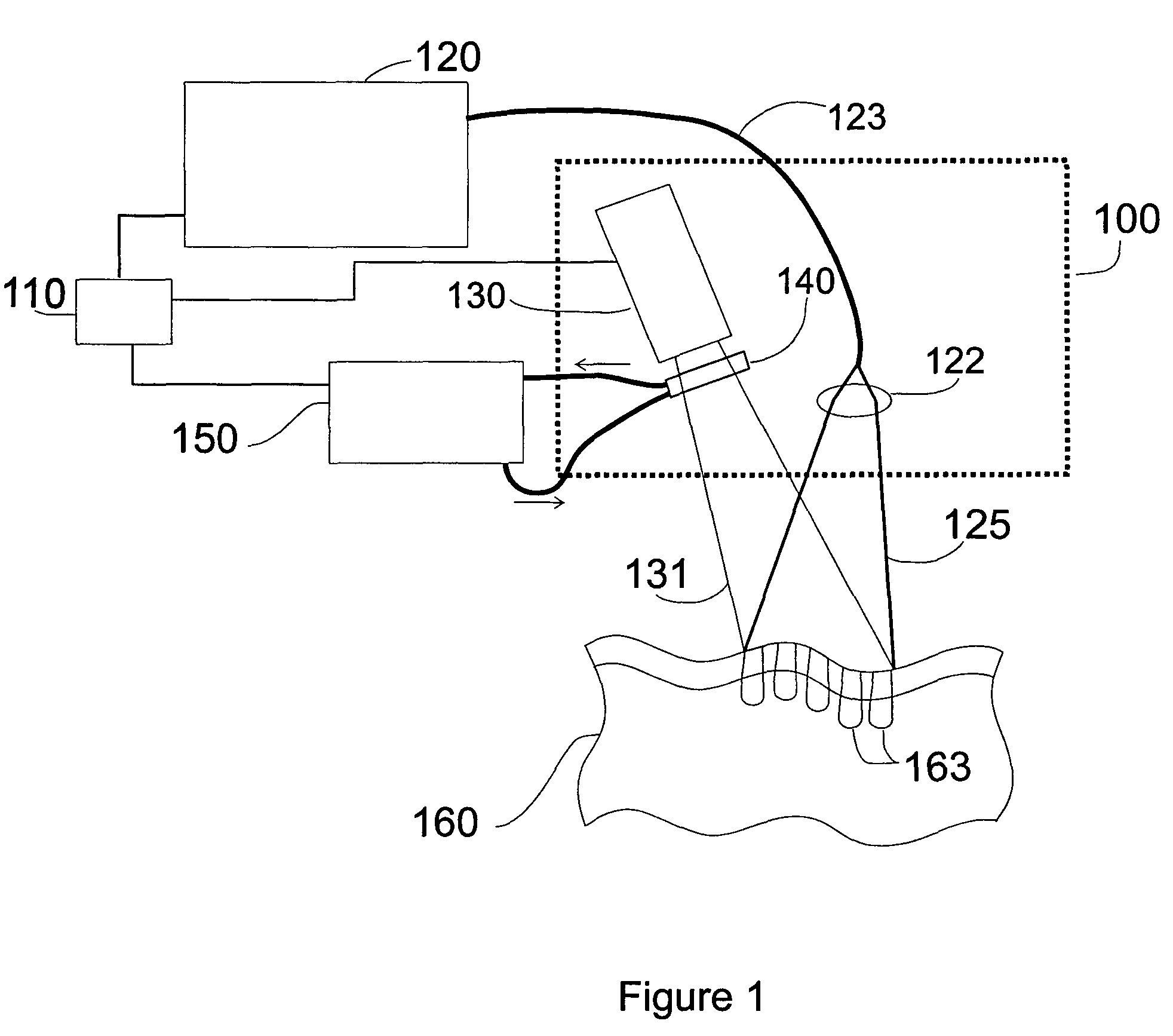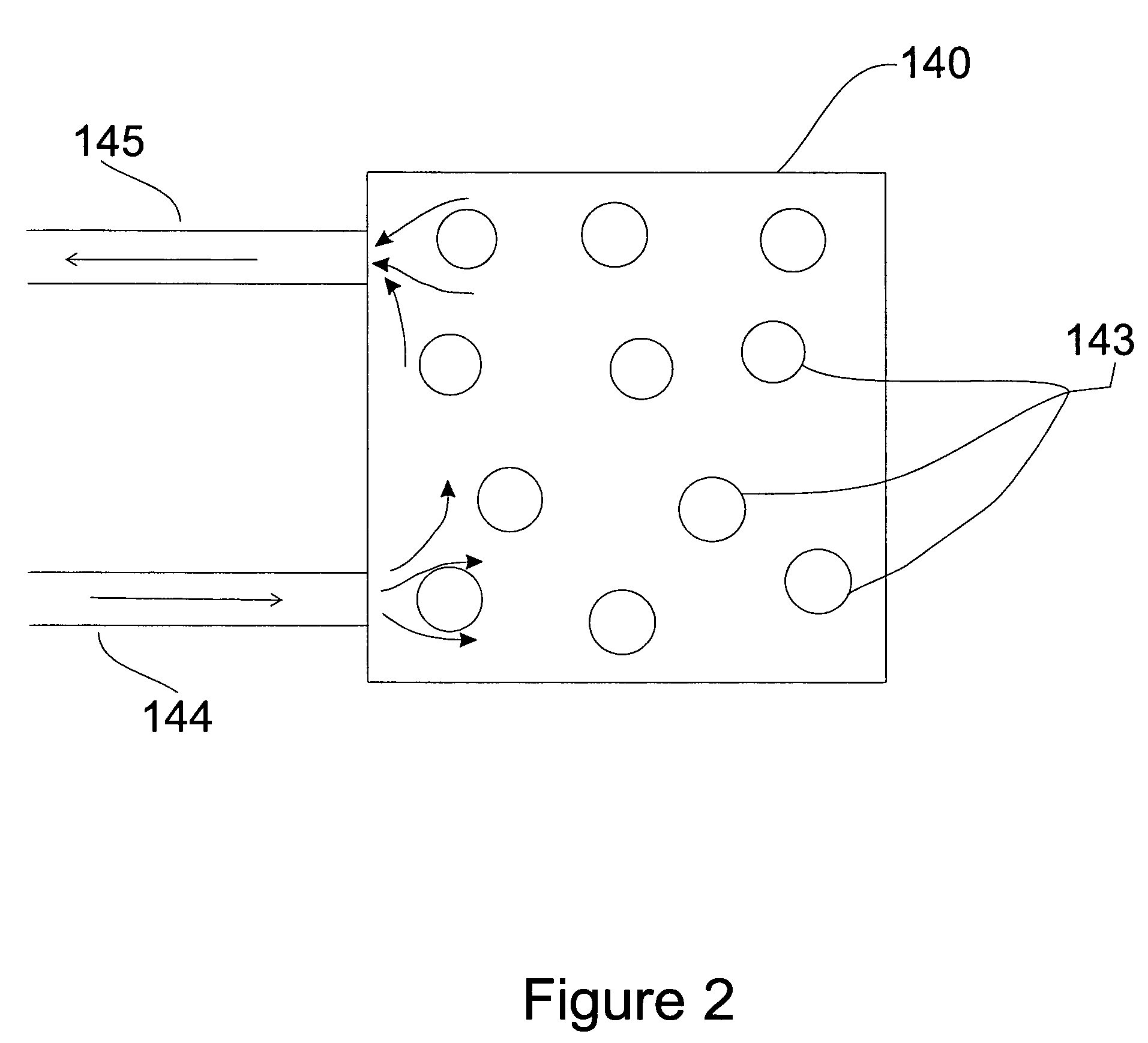Patterned thermal treatment using patterned cryogen spray and irradiation by light
a cryogen spray and thermal treatment technology, applied in the field of patterned thermal treatment using patterned cryogen spray and irradiation by light, can solve the problems of slow healing and other side effects, low risk of side effects, and difficulty in optimizing parameters, so as to avoid freezing or burning the tissue. , the effect of avoiding the effect of burning
- Summary
- Abstract
- Description
- Claims
- Application Information
AI Technical Summary
Benefits of technology
Problems solved by technology
Method used
Image
Examples
Embodiment Construction
[0026]FIG. 1 illustrates an embodiment of the invention. This embodiment includes an optical delivery system and a cryogen delivery system. In the example of FIG. 1, the optical delivery system includes optical source 120. The optical delivery system of FIG. 1 also includes light guide 123 and lens 122. Light guide 123 delivers light 125 from the optical source 120 to the delivery lens 122. The delivery lens 122 delivers light 125 to a target tissue 160.
[0027]In the example of FIG. 1, the cryogen delivery system includes a cryogen container 130 and a patterning element. The cryogen delivery system of FIG. 1 includes a mask 140 as the patterning element. The cryogen delivery system of FIG. 1 also includes a temperature control system 150 for heating the mask 140. The cryogen container 130 is controlled by the control unit 110 and sprays a cryogen 131 towards a mask 140 and towards the target tissue 160. The mask 140 patterns the cryogen 131 by allowing part of the cryogen 131 to pass...
PUM
 Login to View More
Login to View More Abstract
Description
Claims
Application Information
 Login to View More
Login to View More - R&D
- Intellectual Property
- Life Sciences
- Materials
- Tech Scout
- Unparalleled Data Quality
- Higher Quality Content
- 60% Fewer Hallucinations
Browse by: Latest US Patents, China's latest patents, Technical Efficacy Thesaurus, Application Domain, Technology Topic, Popular Technical Reports.
© 2025 PatSnap. All rights reserved.Legal|Privacy policy|Modern Slavery Act Transparency Statement|Sitemap|About US| Contact US: help@patsnap.com



